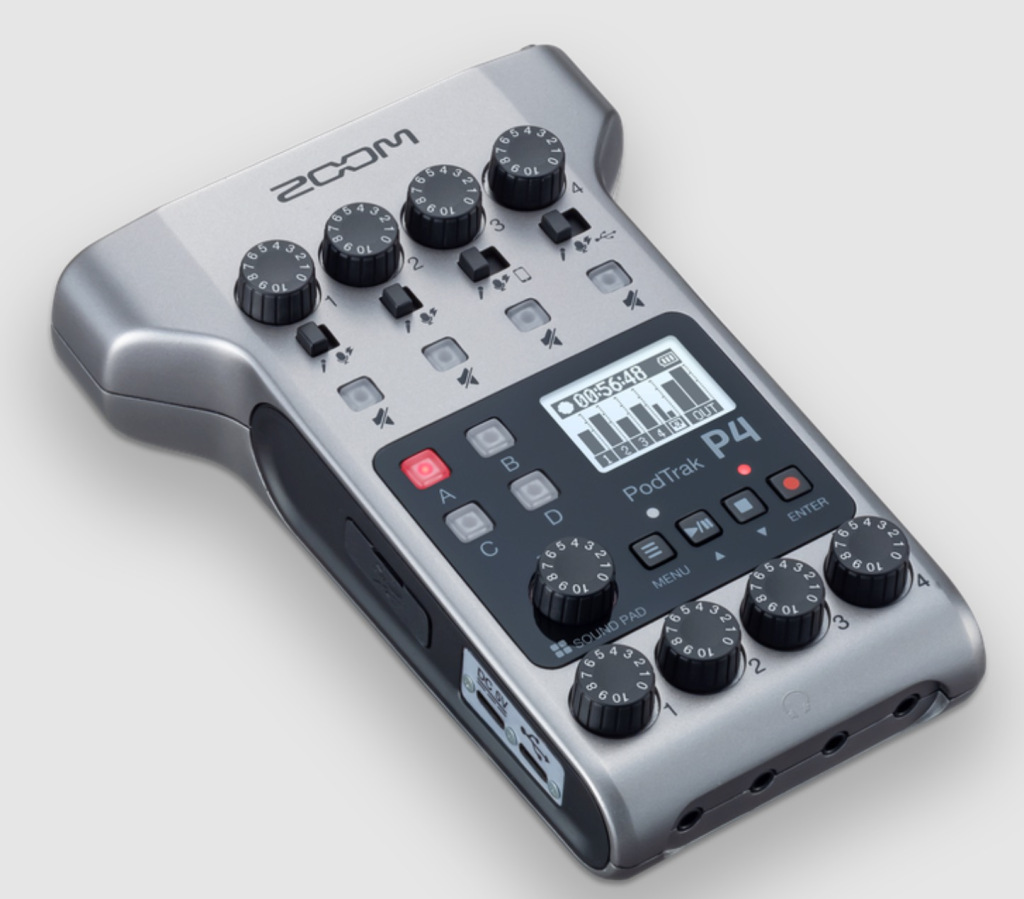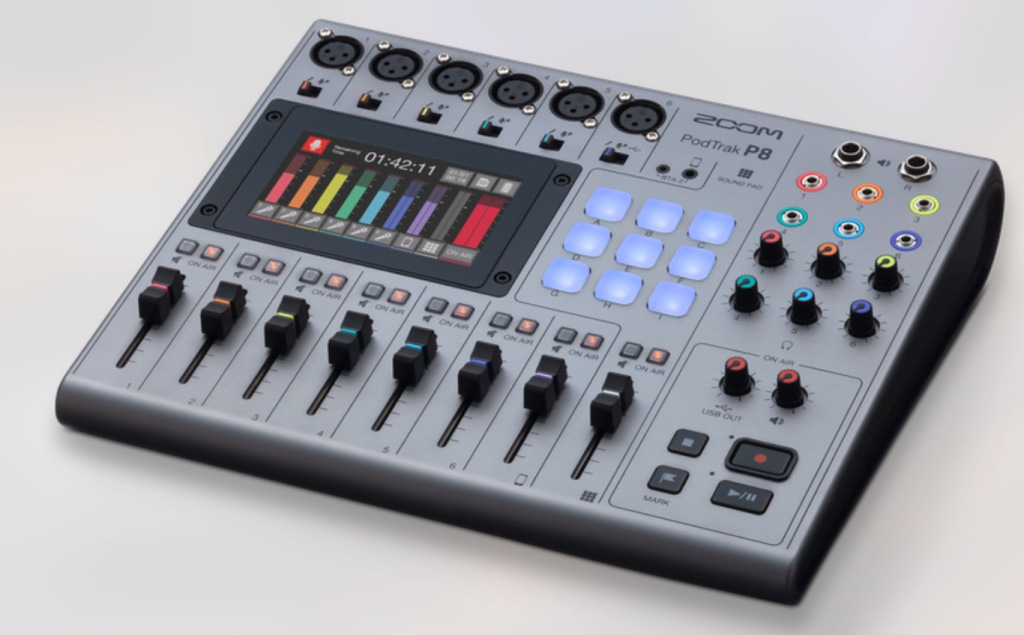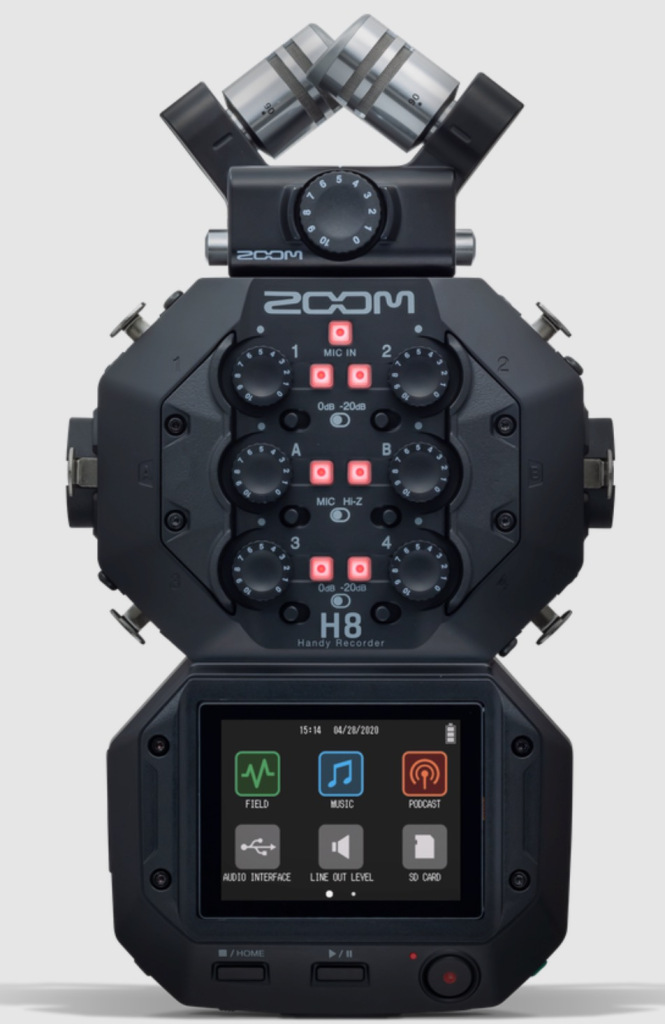Newish Zoom Recorders

Just to be clear. I am not talking about Zoom, the video conference tool. I am talking about Zoom, the audio/visual recording hardware company. For long time readers of IT Babble, you may know that I have a sweet spot for Zoom.
I own a Zoom H6 for about 8 years and absolutely love it. The Zoom has never, never failed me in all that time. The build quality is rock solid. If I happened to drop it I certainly wouldn’t worry too much and it can run on a variety of power sources:
- AA Batteries
- USB power bank
- Computer power
- A plug in brick adapter with a USB input
There is more, in fact I could easily write a whole post just about my H6 and how it is a great podcasting machine, but folks, I am here to bring news of Zoom’s most recent endeavors and how awesome they are.
Podktrak P4 & P8
Zoom doesn’t mess around with these two. While the H6 is a handy recorder with an attached mic, these two are far more focused in their intention. The P4 (pictured below) has 4 XLR inputs with 4 headphone outputs (one for each track). You can control the gain for each input and the listener can independently adjust their headphone levels!

Like my H6 though, it can run off of standard batteries or a USB powered input (DC, from a computer, or a USB power bank). This makes it very portable. It also looks like you can mute individual inputs while recording (something the H6 can’t do). It also records to an SD card which means there is no need for it to be plugged into a computer though if you want to go that route you sure can.
Oh yeah, it can handle phantom power too if you have a mic that requires it. All of this for about $200 USD. This, of course,includes no microphones or XLR cables, but honestly, you can pick up those on the cheap, cheap especially if it is just a spoken word podcast. While the Shure SM58 will sound fantastic, you and your students will also sound pretty good with an affordable set of Behringer mics. Finally you can integrate 4 sound effects that you can trigger just from pressing a button. Think laugh tracks, applause or whatever meme sound you’d like to integrate.
The P8 is the other podcast focused machine Zoom has released and it is pretty crazy. While much larger than the P4 it still is technically portable as it can run on batteries. That size those comes with a sizable amount of options!

You have 9 assignable sound effects and four banks (36 total sound effects) to pick from while recording. You can edit the recording right from this deck meaning less of a need for a computer. It has 6 XLR inputs and of course there are 6 headphone outputs with individual gain and headphone volume control independently. There is a dedicated channel (not one of the 6 previously mentioned) from remote calls (Zoom, Skype, phone calls, etc.)
Oh yeah, this can also plug right into the computer if you want to stream it out live or record it directly into another program like Audacity, GarageBand, Logic, etc. The P8 is $500 which is certainly up there.
Not only are these two super powerful, they are also very easy to use. You don’t need to be an audio engineer to feel comfortable with these products.
H8
What am I looking at here?

This looks like a killer machine from the Matrix. However, this is the new H8. It is definitely the new big brother to the H6 which I have. First, it has 6 XLR inputer plus the included microphone (the one on the top can be swapped with others that cost extra). It has a touch screen that will let you swap between music, field recorder and podcast modes. Very nice. This is a much more diverse machine than the Podtraks, but if you are thinking of using this just for podcasting, it would be more than enough, but there is only a single audio out meaning if you’re recording a podcast, only one person can monitor the sound.
It’s not a deal breaker, but if you have panelist who is really moving in their seat or turning their head away from the mic, their voice can sometimes fade and increase in volume. It makes it harder to mix after the recording. If that person was monitoring their own audio, then they would most likely quickly pick up on that “bad” behavior and hopefully fix it.
At any rate this beauty will set you back $350 USD. A little steep to be sure.
Should you get any of these?
It really depends. If you’re really into bringing podcasting into your school then at least consider them. I know that students have iPads, Chromebooks or other devices on carts that they can use so it can be a hard sell to principal or business office to get them to sign off on this.
I like to frame these purchases as multifaceted solutions. They can help record group meetings, interviews, promotional material for the school and of course student podcasting or live broadcasting. When looked at this purchase like that, it makes it a lot more appealing than just a $200 device for podcasting in my 7th grade elective class that may not even be offered next year.
In any case, they are cool! While there are other podcasting rigs out there to consider, Zoom equipment is built tough and built to last a long time.
Source: IT Babble Blog and Podcast
You must be logged in to post a comment.